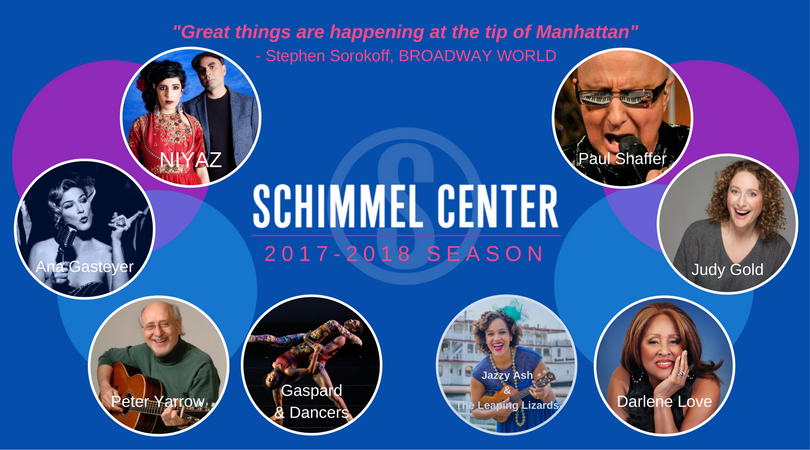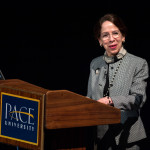An Interview with Dr. Janetta Rebold Benton
This February, Dr. Janetta Rebold Benton will take the Schimmel Podium once again to continue her fabulous “ART HISTORY ALIVE” series for Pace Presents. This time, she will be bringing particular attention to “The Great Masters.” Each lecture will focus on a different artist. Featured artists will be Raphael, Pierre-Auguste Renoir, Frank Loyd Wright, and Frida Kahlo. I recently had the opportunity to interview the esteemed lecturer and learn first hand what scholars will learn from this series.
MT: The range of artists you picked for this series sure does cover a huge scope of history. It is also worth noting that Raphael, Renoir and Kahlo are all best recognized for their paintings while Wright is lauded for his contributions to architecture. How did you go about choosing these particular artists?
JRB: I wanted to select four celebrated masters who represent four different styles, eras, and countries. Raphael is from the Renaissance in Italy; Renoir a French Impressionist; Wright an American architect; and Kahlo a Mexican Realist–although she does not fit neatly into any single style.
In regard to Wright being an architect whereas the others in this series are known primarily as painters, I want to mention that Raphael was also an architect and worked on St. Peter’s in Rome. Michelangelo, about whom I spoke in an earlier GREAT MASTERS series, was primarily a sculptor, but also a painter and an architect.
MT: Is there any trait that these four masters have in common?
JRB: I think each was a genius–but in their own, very personal, way. These artists created works that continue to intrigue, to fascinate, to elicit interest–both positive and negative– over a long time, in many places. I believe that this is true because each one created works of art that touch on, that appeal to, something fundamental, some sort of commonality, in our nature as human beings,
MT: Do you have a favorite of the four? Does one’s art speak to you more than the other three?
JRB: Now that is a tough question! I do appreciate and admire the artistic, the aesthetic accomplishments of each. But if I were forced to pick only one of these four, it would be Frida Kahlo, perhaps influenced by the fact that we share a birthday–July 6. She was born in 1907. I will not tell you the year I was born.
MT: Our Pace Presents audiences have become acquainted with your lectures covering long time periods, large geographic areas, and various genres. How does focusing on individual artists change the conversation? Will we learn more about the humanity of these great masters?
JRB: At the end of each lecture, I hope each person in the audience will feel that they genuinely understand the artist and his or her work. If they see another work by this artist, it should be meaningful to them, based on the information, ideas, and examples offered in my lecture on that artist.
MT: You have been noted for the humor and wit that you bring to your lecture series. Do you find humor to be an essential trait in a lecturer?
JRB: Humor may not be essential in a lecturer, but it certainly is in life! Humor can be used effectively in a variety of ways.
MT: It has been noted that you always end your lectures with a rhyming couplet in order to cue your audience that the lecture is over. It is kind of your version of Carol Burnett’s ear tug. How did this amusing practice come about?
JRB: Thank you for the generous comparison to Carol Burnett. The concluding poem is intended to summarize the main points of the lecture and put the most important works of art back on the screen. The poems are also intended to make the information more readily remembered and to leave people smiling, endorphins flowing, as they exit the theater.
MT: After each lecture, the conversation continues with a catered lunch in the Schimmel lobby for an additional fee for the attendee. What topics often come up in these lunches? Do you find them to be an essential part of the series?
JRB: I love the lunches! The menus are always themed to the lectures: We will have Italian food after Raphael, French food after Renoir, American food after Wright, and Mexican food after Kahlo. When the guests begin to eat, I pose two questions for them to discuss with their tablemates. At desert, I lead an informal discussion about their responses–which range from seriously intellectual, to insightful, to very funny.
MT: Great artists aren’t remembered for their personal skills. However, out of these four, which one would you most desire to hop into a time machine and visit with for an afternoon tea? Why?
JRB: Among these four I would pick Raphael, and a glass of wine rather than a cup of tea. I would want to ask him about the Renaissance, how this extraordinary burst of creativity came to be, and try to learn how these ideas could benefit us today. And I would ask for introductions to Leonardo da Vinci and Michelangelo.
MT: Thank you so much for answering my questions and I look forward to your series.
Lectures take place Wednesdays at 11:00am on February 19th, 26th, March 5th, and 12th. All tickets are $25 or $80 for the entire series. Luncheon tickets are an additional $25 per luncheon. To purchase tickets, you may call (866) 811-4111 or (212) 346-1715, visit our website at schimmel.pace.edu or visit our box office directly at 3 Spruce st, New York, NY.
See you at the Schimmel!
Michael Torbet
Pace Presents’ Blogger


